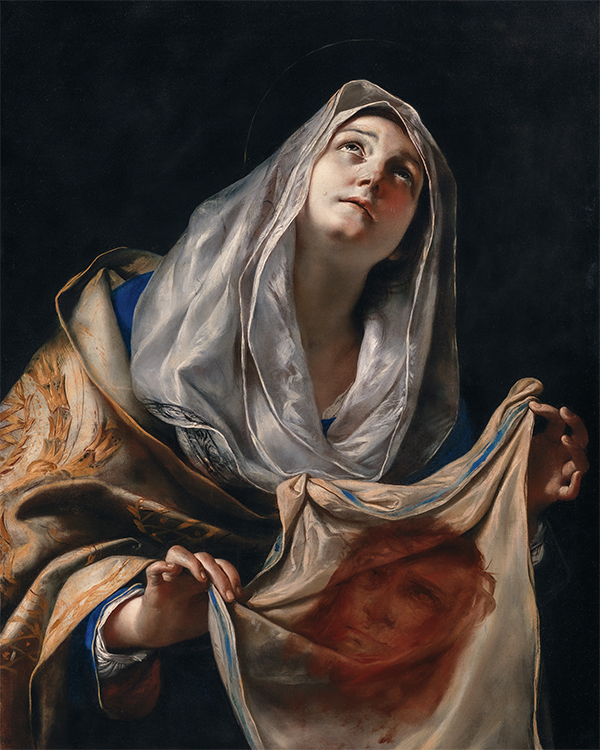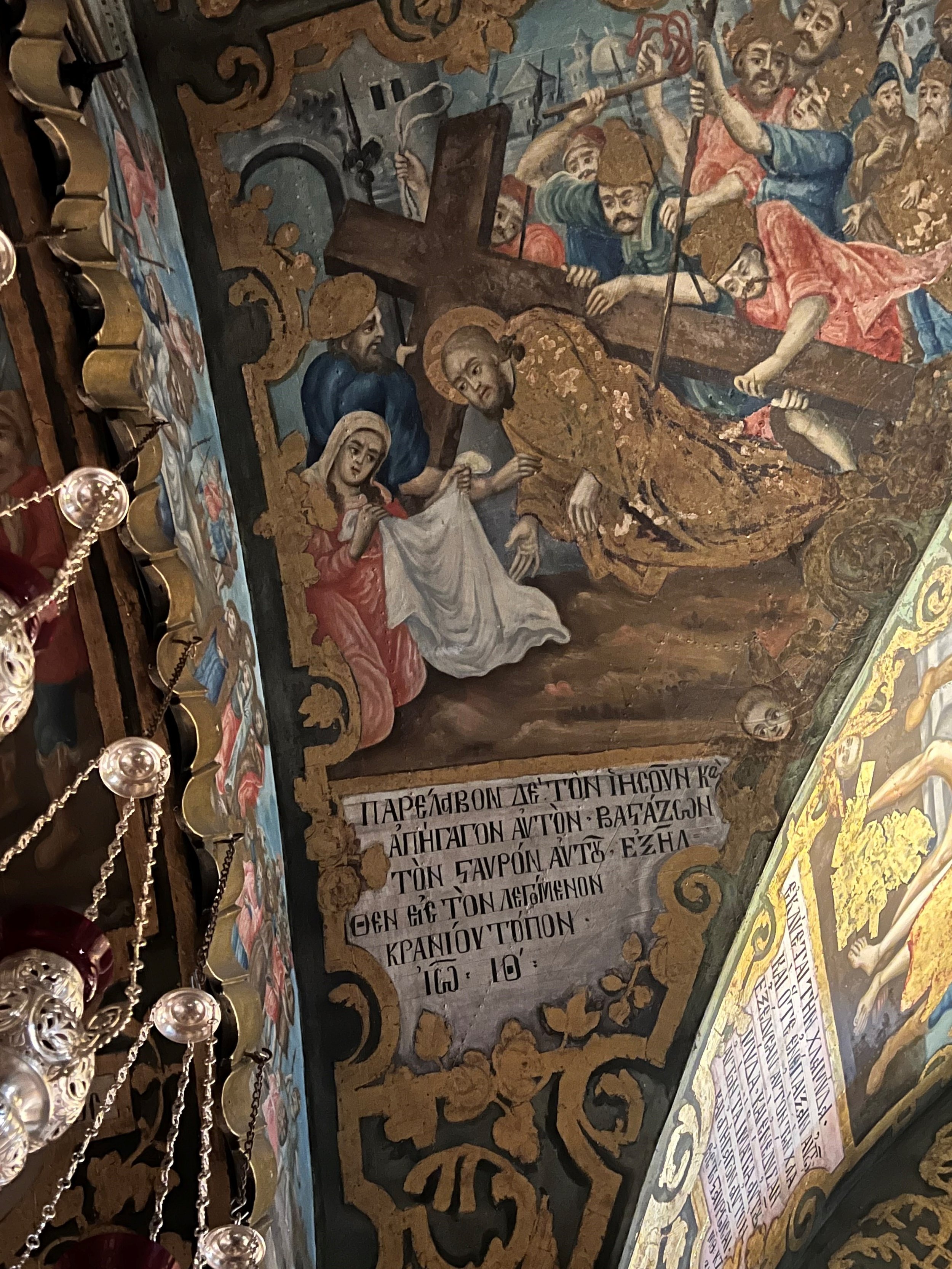The Veil of Veronica is a veil upon which the adorable face was miraculously impressed without paint nor artificial colors, but by the power of the divine Son of God during His passion. After some two thousand years, it is quite darkened, so its features are difficult to make out. It is housed in the epistle side pillar of the papal altar along with the holy lance and wood of the true cross since 1606.
From tradition, we are informed that the holy woman known as Saint Veronica broke through the mob to console Jesus while He was carrying the cross, His holy altar of sacrifice, to console Him. “So full of deep sorrow into which He was then plunged by the weight of the sins of the world.” She took off her headdress of fine Egyptian linen and handed it to Jesus to wipe His face of sweat, mud, spittle, and blood. He gave it back to her with His august image impressed on it. His imprint detailed the marks of the fingers of the cruel men who gave the sacrilegious blows…
The remembrance of this has been attached to the sixth station of the cross since time immemorial… It is still preserved as one of the precious relics in memory of the great Redeemer. The Veil of Veronica represents the face of Jesus in His passion…
Jesus revealed to Sister Mary of St. Peter the commemoration of the wiping of the sacred face with the Veil of Veronica has such an effect: for those who apply themselves to the work of reparation would perform the same work as Veronica. When devotees of the Confraternities of the Holy Face make the prayers contained therein, it is as if they are each there breaking through the mob, consoling the face of Jesus.
Fr. Lawrence Carney, The Secret of the Holy Face – The Devotion Destined to Save Society pp. 25-28
Over 6,000 Certified Miracles
In the 1860’s a Benedictine benefactress of Arras gave three copies of the engraving of the Veil of Veronica to the Carmel of Tours, France. Ven. Leo Dupont received two and put one in his drawing room. He put an oil lamp to burn night and day. Since these were relics of Our Lord Jesus Christ touched to the Veil of Veronica, the Spear and the Holy Cross, over 6,000 people were cured miraculously.
Venerable Leo Dupont’s Drawing Room was converted to the Oratory Chapel of the Holy Face and maintained by the Priests of the Holy Face. They no longer exist but the center is run by a priest appointed by the archbishop of Tours.
From about 1860—1945 Priests of the Holy Face would go to Rome annually and touch copies to the Veil of Veronica, the Spear and the Holy Cross, and give them to devotees.
The two original copies of Veronica’s Veil given to Venerable Leo Dupont by the Carmel of Tours, France in the 1860’s. They are kept at the Oratory in Tours, France.
Venerable Leo Dupont’s book recording thousands of miracles.
Gifts left by people who were cured, as a Thank You to Venerable Leo Dupont.
St. Peter’s Basilica, Rome, Italy
The original Veil of Veronica is kept at St. Peter’s Basilica in Rome, Italy. The Veil is stored in the chapel that lies behind the balcony in the southwest pier supporting the dome.
Paintings of Veronica’s Veil Appear in Artwork Throughout History
The event of St. Veronica offering her veil to our Lord during His journey carrying his cross to Calvary has been documented in artwork throughout the world. It can be found in many churches and museums, especially in the Holy Land and Europe.
A fresco decorates the arched ceiling at the entrance to Golgotha, the site of Jesus' crucifixion, on the upper level of the Church of Holy Sepulchre in Jerusalem. The Church was reconstructed in 1149 after 800 years of destruction.










